“Conversations with your Kids” is a series in partnership with Responsibility.org, an organization that encourages parents to establish open lines of communication with their children, particularly around the issues of peer pressure and underage drinking. Each post will explore a specific topic with expert tips from Dr. Deborah Gilboa (Dr. G) on how to address these topics in an age appropriate way.
When I was in 7th and 8th grade, I was a “mean girls” victim. Part of this came from my need to be friends with people who in retrospect were not good friends to me. I worry so much about my girls falling into the same social patterns. Harlow is very particular about her friendships while Mazzy wants to be friends with everyone, which almost concerns me more. Mazzy is very good to her friends. She is inclusive and kind. But with that comes confusion when she is not treated the same way and sometimes I think the need for everyone to like her outweighs how that relationship actually makes her feel.
I’ve wondered when I should encourage her to work it out, when I should advocate stepping away and when it is appropriate for her to involve an adult. One of the hardest lessons for me in my own life was understanding that not every relationship is worth your investment. Should I teach my child that sometimes people are just not your friends?
And what if your child is not the victim, but the aggressor? Or if your kid is not the aggressor, but the kid who stands silent? Or the kid who follows the bully and learns from their example? Each situation presents it’s own parenting challenges and I don’t think any of us will get through our kids’ adolescence without having to address at least one of them. Thankfully, Dr. G has written some great tips that we can implement the next time our child or a teacher or another parent comes to us with a bullying issue.
DR. G’S TIPS ON HOW TO TALK ABOUT BULLYING WITH OUR KIDS
In any bullying situation, there are three possible roles. The person getting bullied, the person doing the bullying, and the person watching. Research shows that most kids will find themselves in EACH of these roles at different times. So it’s important to talk to our children about all of them. Bullying is a normal way for a child or teen to exert power over someone else – but it is totally unacceptable. There are some things we can do to decrease how often this happens, but the most important is this: when bullying does occur, what you do next as a parent is extremely important.
When you’re worried your child is bullied…
1. Gather information. Michael Thompson, a famous child psychologist, wrote in his book Best Friends, Worst Enemies that most stories we hear from kids could best be summed up “It all started when he hit me back!” Often children start telling us about a difficult social situation from the point where they were victimized but not necessarily from the beginning. Ask questions, get as much unbiased information as you can. Try to stay open to the possibility that no one involved behaved in the best way possible, including your child.
2. Be sure it’s bullying. We’re using that word a lot, and sometimes it’s used to describe unpleasant or hurtful situations that aren’t actual bullying. Bullying is defined as repetitive and damaging behavior that takes advantage of an inequality to make one person feel consistently “less than” the other person. Any time a child is hurt we need to understand the situation as best we can. But, just because a child was hurt does not mean it was definitely bullying.
3. Get involved on strike three. According to the definition above, if a child is experiencing bullying then the situation has already happened more than once. So this time ask your child what they think they might do to solve the problem and encourage them to try that solution. Talking to the child to say “stop!” or to their friends to ask for a little back-up are great possibilities. Talking to an adult who’s in charge – a teacher or coach or leader – is a fantastic skill to develop. But what if your child has experienced this twice, tried a solution (or two) and is still victimized? It’s time to step in. And it’s not worth worrying about being a “tattle tale.” At first your job was to encourage your child to show resilience through problem-solving. Now your job is to model resilience through your problem-solving.
4. Don’t tell kids to be friends with everyone. From a very young age – as soon as your kids use the word “friend” – talk about what makes and breaks friendships. The truth that there are friendship breakers – behaviors that are not acceptable between two people – will give your child the perspective to judge others’ behavior in a very healthy way.
When you’re worried your child is bullying someone…
5. Remember that bullies aren’t villains, they’re kids. Most kids try out bullying behaviors at some point. At home, or at school, a child gets an idea of what they want in a social situation and then tries different techniques to get it. Instead of labeling that child, name the behavior. “That is bullying, and it’s not OK.”
6. “Explain what you want, then we’ll figure out how you might get it.” Once we’ve told a child what behavior is not acceptable, we have to help them find strategies that are acceptable. Find a goal the bullying child has that you can agree with, like, “It makes sense that you want to be captain.” Help that child problem-solve respectful ways to reach that goal.
7. Listen to the talk. One of the best warning signs that your child is trying out some bullying strategies will happen in your home or your car. Listen to the way your child speaks to others, and whether her friends are willing to disagree with her choices. Does your child always get his way with the movie to watch or game to play? Then it’s time to find out why.
When your child is on the sidelines…
8. Face the facts. All kids witness bullying. So talk to them about what they will do when it happens (not if). Ask how they would like to handle that situation, and what’s hard about defending someone who is being bullied. Show empathy for those struggles, even while you make it clear to your child what you hope they will do.
9. Turn your bystander into an upstander. Watching a child be bullied is damaging to the victim and to your child because it normalizes the behavior. Go over some strategies, from walking away (not the best but much better than just watching) to getting an adult, to stepping next to the victim, to stepping in front of the victim. Role play if you can, so that your child can be ready. This will happen.
10. Understand that bullying is strangely attractive. Most kids bully others because it gets them more social power. Other kids are naturally attracted to that kind of social power, even if they don’t like how the person behaves. Holding our kids accountable for being a “henchman” to someone who is bullying – standing there and laughing or in any way encouraging that bad behavior – is crucial to protect others and to protect our kids. Because – and be sure to point this out to your kids – the person with that kind of power will eventually turn it on their supporters. Honest conversation, with questions like “Why do you like that person?” and “What do you think of that behavior?” will help your child to figure out how and why to take themselves out of the bullying equation.
When your child has a phone…
11. Know that everything that happens IRL happens online, but worse. Each of these roles and all of these situations occur in the virtual world. And online, studies and children tell us, it’s far worse. Why? First, there is no downtime. This can go on 24 actual hours a day. And, second, people are willing to say things from behind a screen that are even nastier than what they will say in person. So be involved and aware and have all the passwords and actually check what your children are experiencing online.
If anyone has any more questions about bullying that were not addressed here, please ask them in the comments. Dr. G will try to answer as many as she can!
To find out more about Responsibility.Org, click here.








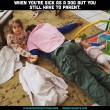




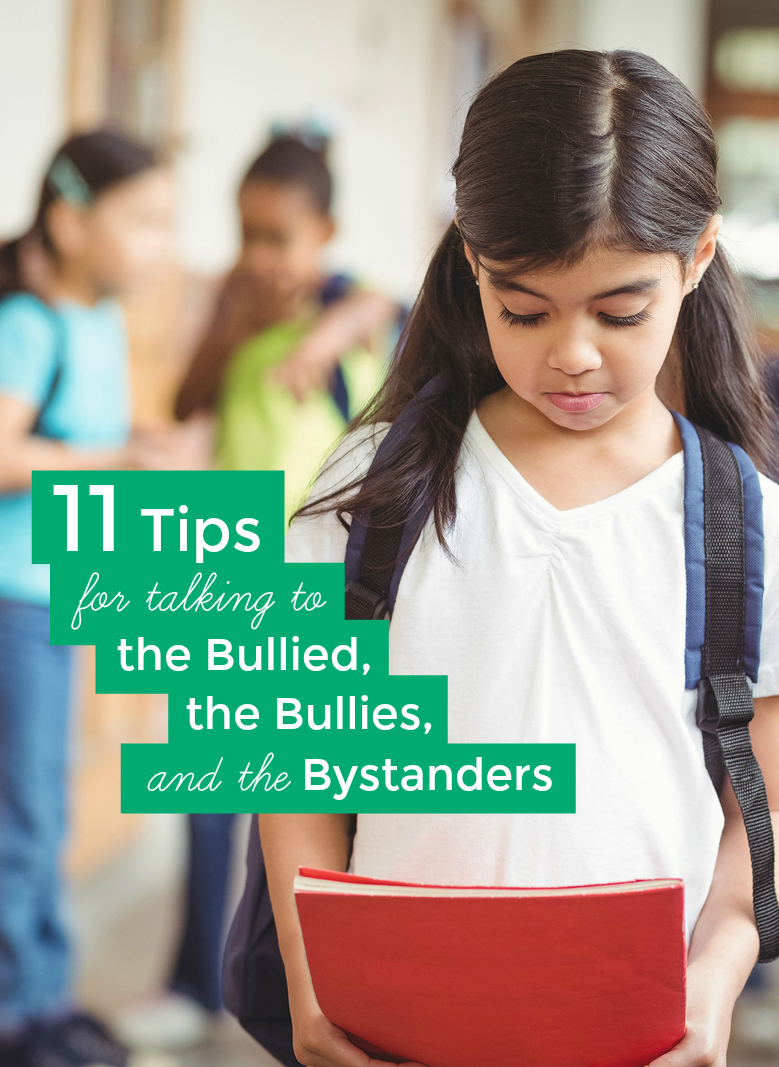
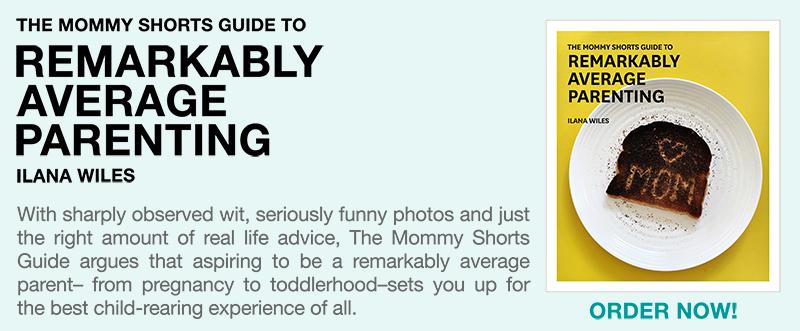

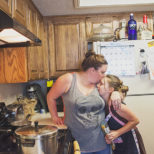


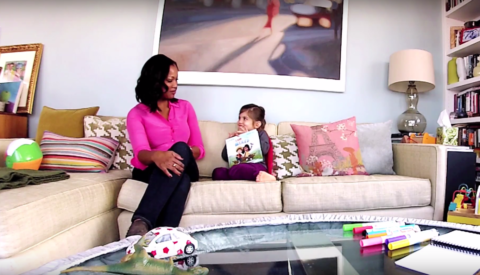






Thanks for this article. My daughter is being bullied in preschool – yep, preschool, can you believe it! I’m working with her to try to make it stop but nothing has worked yet. She does not tell her teachers, she waits until she gets home to tell me. I need to figure out how to get it to stop because I’m worried about her being in class with the bully.
It totally happens in preschool – and way to go that you for recognizing it. I would just mention that this child is bullying, but is a child who can learn other social techniques to stop bullying. Don’t be afraid of this child, or this child being in a group with yours. Just ask your daughter’s school to address this issue directly and consistently.
Sadly, bullying starts at a very young age. Kids can be clique-y without even realizing it. It needs the right kind of teacher to recognize it and teach kids to be inclusive.
My child started at a new preschool. she was moved up to the next class about 6 months earlier than the rest because they said she was mentally ready for it.
well, the little girls in that class all knew each other right from the baby room. They were very girlie in that they liked their sparkle shoes (frozen at that time), tutus and shiny tops, frozen books/stickers, etc. My daughter doesn’t like any of those and had a very hard time fitting in. She would try and they would just ignore her. The boys didn’t want to play with a girl. So, at the age of 3.5, she started fighting back. The teachers were doing nothing to help her ease in. She would try and they would say no or something kind of mean. After a month, she decided to hit back 🙁 She would push them away or take their things or start knocking down towers they built …. so on. All I got from the teacher was oh she had a bad day. At no point was there an attempt made to understand why the kid was behaving the way she did. She had ZERO problems in the previous class but it didn’t matter to her. When 2 or her friends from the lower class moved up, things improved dramatically!!
One teacher just wanted kids to listen to her, the other was too soft. All the first one did was complain to me the minute I walked through the door … so much so that she would do it infront of other parents. Sadly, other parents complained about her as well but nothing was done. I couldn’t wait for the 6 months to be up for her to move on to PreK. I was not going to move schools once again to torture my kid even more.. She moved up and guess what, all the problems were history!
Mary, you make a really excellent point. Whatever a child’s behavior, we have to look for the reason behind it. Correcting is not enough. I’m glad things got better!